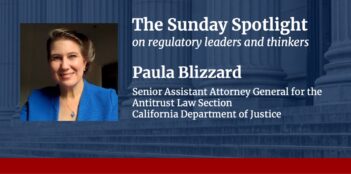
Scholar argues that Santa Monica’s regulation of Airbnb listings has not reduced long-term rental prices.
Short-term housing rental services such as Airbnb provide cheaper accommodations for travelers and extra cash for renters. But the proliferation of these services has some city officials worrying that short-term tenants and vacationers are preventing long-term residents from moving in.
One scholar argues that, in at least one case, strict regulation of Airbnb has proven unsuccessful in halting this trend. In a recent paper, Cayruã Chaves Fonseca of the Centro de Estudios Monetarios y Financieros (CEMFI) suggests that the Home-Sharing Ordinance in Santa Monica, California has not resulted in lower long-term rental costs.
Santa Monica sits on the Pacific Ocean and is a popular beach spot for residents of Los Angeles. The high demand for tourist accommodation, however, has compelled property owners to make rental units available on Airbnb, thereby reducing the number that would otherwise be available for long-term rentals.
In response, the Santa Monica City Council passed an ordinance in 2015 that forbids any city resident from renting out an entire residential unit for “exclusive transient use” of fewer than 30 days. The ordinance defines “exclusive transient use” as use of the property by a visitor when none of the accommodation’s primary residents live on-site during the visitor’s stay.
The city council observed a trend where entire apartment buildings were dedicated to tourist accommodations, “essentially turning an apartment building into a hotel in a residential neighborhood.”
The ordinance did not eliminate all rental opportunities. It still permits “home-sharing”—where hosts rent out part of their dwelling to guests while continuing to live on the premises. Anyone wishing to host guests under the ordinance must also submit an application along with proof of residence.
According to Fonseca’s recent paper, the ordinance has not accomplished its main goal of reducing rental costs for long-term residents. Fonseca compared rates in Santa Monica to rates in Venice, an adjacent neighborhood of Los Angeles. Even though Venice has half the population of Santa Monica, it has more rentals available on Airbnb. Venice is also a popular beach destination, but it has taken no steps yet to regulate short-term rentals.
Long-term rental rates in both Santa Monica and Venice increased by about 14 percent between 2015 and 2017. Other cities in the county reported similar increases.
According to Fonseca, the ordinance did have immediate effects on the short-term rental market. In April 2015, about 695 homes in Santa Monica were listed on Airbnb, before the city council passed its ordinance. This total dropped to 401 listings in the months after the passage of the regulation but rebounded somewhat to 570 listings by July 2017—two years after the passage of the ordinance.
Overall, Santa Monica saw a modest drop in listings for short-term rentals. But Fonseca notes that this occurred at a time when Airbnb was expanding in other cities. In Venice, the number of listings grew from 921 to 1569 in the same period. Fonseca estimates that Santa Monica would have had 861 more Airbnb listings by the end of 2017 if it had never passed the ordinance.
Fonseca also finds that the prices for short-term rentals were more volatile in Santa Monica than in Venice. Once Santa Monica began enforcing its ordinance, the average short-term rental rate rose by over $50, while the number of listings fell. When the number of listings rebounded, prices fell again. Fonseca suggests that the volatility in the short-term rental market was “likely to be connected to the regulation,” since the lower number of listings would drive up prices for the remaining units.
When the city council passed the ordinance, it assumed that Airbnb and other similar services “reduced the number of rental units that would otherwise be available for long-term rentals.”
Fonseca contests this assumption. He instead suggests that short-term “vacation” rentals and long-term rentals may not be “as close substitutes as one may initially think.” Property owners, he claims, may be unwilling to rent their properties for longer periods of time. He states that there is “no indication” that the ordinance significantly affected Santa Monica’s for-rent vacancy rate—the rate of unoccupied residential units available for long-term rent.
The ordinance itself may also have affected property owners’ behavior. Fonseca observed that, although the for-rent vacancy rate was unaffected by the ordinance, Santa Monica did see a small rise in properties left vacant for unspecified reasons. He proposes that property owners may be waiting to see the effects of the ordinance before making their properties available for rent.
The location and nature of Santa Monica may also have consequences for the rental market. Since it is a popular beach town, Fonseca notes that many property owners may be in and out of their properties over the course of a year. The flexibility to have a vacation home available at any time may dissuade some owners from renting their properties for longer stretches.



